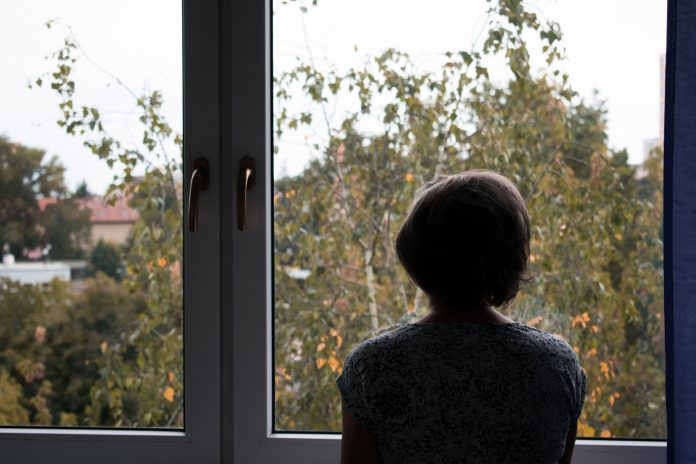Data from 50,000 Canadians finds that loneliness and depression were highest in women aged between 65 to 74, with two-thirds feeling separated from their family
Waves of delayed cancer care or the surge in domestic violence have been described as shadow pandemics, alongside other virus impacts like loss of income and increased issues with maternal healthcare.
Mental health is one of the key global issues, with loneliness blooming in the necessary absence of social contact. One study even found that loneliness can change brain structure.
For people who are immunocompromised, loneliness is an ongoing issue – especially as countries like the UK announce a “living with COVID” approach that drops all precautionary measures against the virus. Though vaccines exist, those with highly-vulnerable immune systems face the likelihood of severe illness, with the potential to be hospitalised.
Loneliness seems like a likely outcome for countless individuals, as COVID continues to evolve and infect.
Older women dealt with a 67% rise in loneliness
In Canada, Laura Kadowaki and Andrew Wister from Simon Fraser University’s Gerontology Research Centre (GRC) looked at how mental health was impacted in the older population. Data drawn from the Canadian Longitudinal Study on Aging (CLSA) paints a picture of what older people went through during COVID lockdowns, especially in relation to loneliness and depression.
The team follow around 50,000 Canadians, between the ages of 45 and 85.
Interestingly, they found that older women were the most impacted by the mental health outcomes of COVID. Among women aged between 65 to 74, there was a 67% rise in loneliness.
When it came to depression, the pre-existing rate of depression in this age-group was 19%. This figure rose to 23%, which can appear like a deceptively small margin, but has deep significance across the country.
Men experienced a lower loneliness increase of 45%
While older women saw a huge jump of 67% in levels of loneliness, men in the same age-group of 65 to 74 saw a jump of 45% in loneliness. For rates of depression, the same men saw an increase of 2% – from 12% to 14%.
Loneliness and depression in an older group, 75 to 84, also documented a jump – albeit, a smaller one. This age-group of both genders reported a loneliness increase of 37%, with depression increasing by 33%.
While men and women had varying levels of loneliness and depression, the research also reveals that an immense two-thirds of women (over the age of 65) felt separated from their families during the pandemic. The same feeling afflicted just over half of men in the same age-group.
Study highlights that some groups are more vulnerable to loneliness
Adults who are low-income and living in social or assisted living environments were found to be clearly more vulnerable to social isolation, alongside older adults who live alone.
The data produced other high-risk groups – those living with dementia, in rural and remote areas, Indigenous peoples in Canada, ethnic minority and immigrant older adults, LGBTQ individuals and those who are informal caregivers.
Separate study finds “flow” can decrease loneliness too
John Dattilo, a professor of recreation, park, and tourism management at Penn State and not involved in this study, said: “By engaging in meaningful activities during free time that demand focus, people can reduce loneliness and increase momentary happiness. Psychological, emotional, and cognitive health are all challenged when people are lonely. Loneliness is associated with depression and other mental health challenges.
“When people become engrossed in what they are doing, they enter a state that is called ‘flow’. Flow can be achieved by engaging in mental or physical activities that we value and that require us to concentrate fully to use our skills.”
Essentially, meaning is essential to decreasing feelings of loneliness. The CLSA study authors separately find that meaningful activity could change the drop in good, elderly mental health that they’ve uncovered.
Technology could solve soaring loneliness and depression rates
For younger people, the use of technology plugged a hole in social interaction. Families gathered around iPhones for nightly facetime calls, groups of friends watched films together from different locations in the world, and many young children were able to access a pseudo-classroom environment via Zoom.
However, the digital divide led to thousands of others missing out on their education and the forming of new, social memories. For some older people, technology remained a cold, inaccessible tool in a time of plummeting mental health.
The researchers, after analysing the loneliness and depression data, believe that a range of programmes built around linguistic and cultural needs could be the solution to reducing social isolation. These programmes could be delivered virtually or in person, via an ambitious collaboration between the government, NGOs, academic institutions and the private sector.
“There is a need for digital technology education and training programs for older adults to address the existing digital divide,” said Andrew Wister, GRC director.
“Participation in virtual group fitness classes can help reduce social isolation and help keep older adults healthy. Ensuring all Canadians have access to low-cost home internet and free internet in public spaces should be a priority.”











